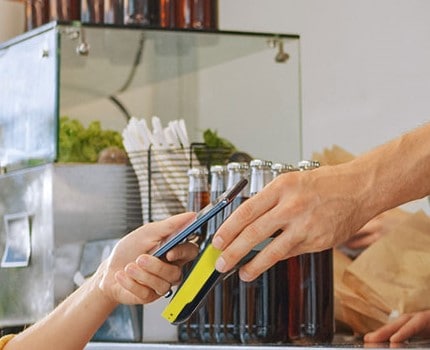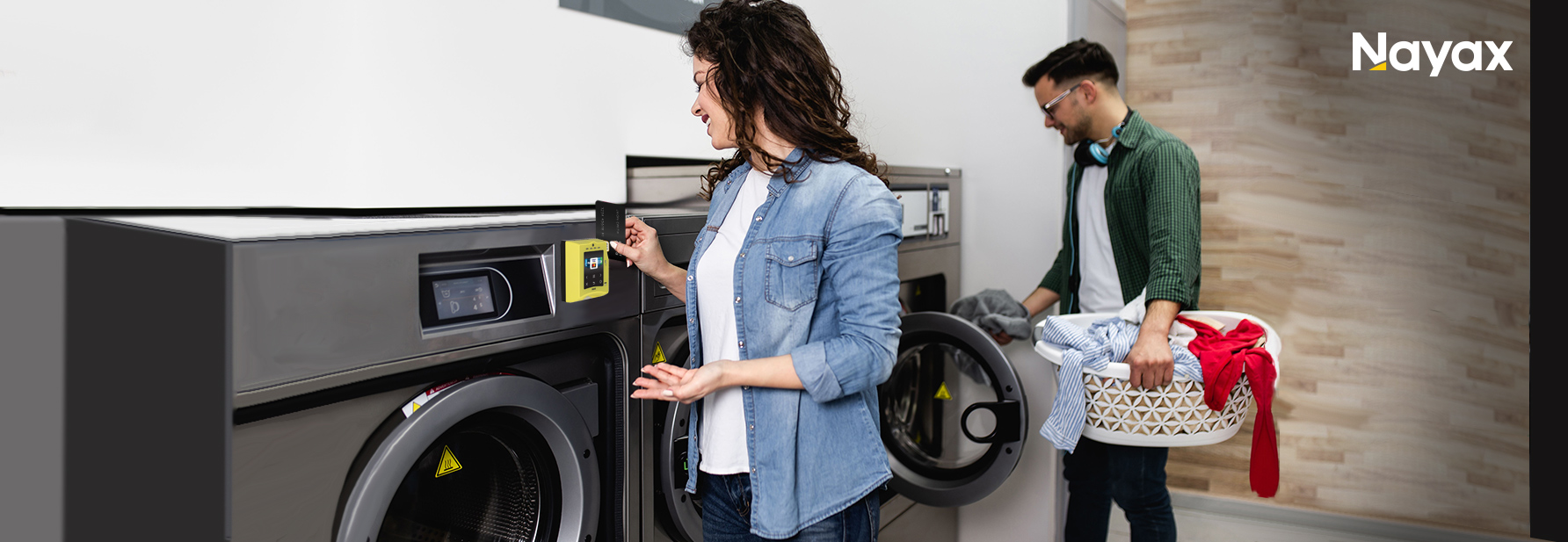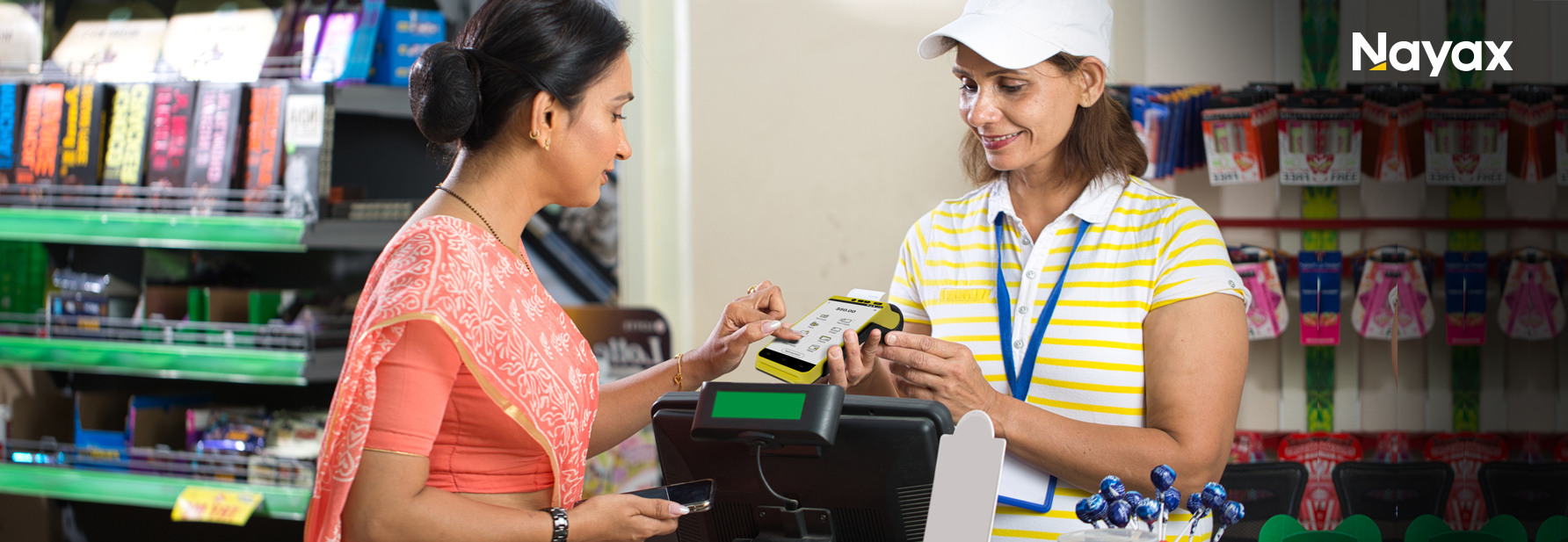The pandemic brought with it a crucial lesson for many retailers, merchants, and business owners. Businesses quickly learned that embracing contactless technologies such as digital payments and self-service checkouts is essential for a brand’s success. Today, point of sale (POS) systems, that allow customers to pay for their purchases with a variety of cash or cashless options, have become the de facto standard at checkout areas. You could be at a restaurant, carwash, laundromat, or even a vending machine. Chances are, you will make a fast, easy, and frictionless transaction through a POS system.
But is providing convenient payment choices the only purpose of a POS system? Or is it possible to reap a broader variety of benefits at the point of sale?
Let’s delve deeper into POS integration and understand why an integrated POS system is quickly becoming a key differentiator for businesses both big and small.

What is POS Integration?
Let’s start with the basics. POS integration refers to the process of bringing all the different, moving components of the business machinery under one umbrella.
A robust and integrated POS system establishes a direct connection between the point of sale hardware and the software related to your business. The hardware could come in the form of card readers, barcode scanners, receipt printers, and more. The software side may include the company website, inventory management platform, fulfillment center, staffing solution, customer database, or even third-party aggregators.
Since an integrated POS system enables all the different components of retail to “talk” to each other or exchange data seamlessly, it empowers a business to automate its processes. This boosts operational efficiencies and helps to reduce costs as well as unnecessary manual labor.
Modern integrated POS solutions can be accessed remotely in real-time with telemetry and management tools. This means managers can check into the system and keep tabs on the business from any location or device as long as they have an active internet connection.
How Does an Integrated POS System Work?
POS integration kicks in as soon as a sale is initiated either by a cashier or by a customer at a self-service checkout kiosk. As the POS machine populates the screen with the different items of purchase and their price, the system’s backend mechanism quietly syncs the data with the inventory management software and updates the stock levels.
The customer decides whether they would pay by cash or use a cashless payment method. At this point, the payment terminal comes into play to collect the remittance, and once the payment is recorded successfully, it sends a trigger to the receipt printer. If the business runs a customer loyalty program, the integrated POS system may offer the customer a discount or award them reward points during this process.
In the meantime, the system updates the business reporting and analytics tool with the updated revenue figures and stock levels, thus negating the need of cross-checking daily receipts against sales transactions manually.
Types of POS Systems

While there are many POS solutions available in the market to cater to different types of business, the underlying technology can be categorized into three main types: on-premise POS systems, cloud POS systems, and open source POS.
On-Premise POS
Also known as “legacy” or “traditional” POS, this system stores all the data on a single server at the place of the business. On-premise POS systems utilize your own hardware and are not dependent on an internet connection. It’s best suited for businesses that prefer to keep their data on-site or want to get a POS system customized/designed specifically for their operations.
Because of the different hardware and software requirements, the up-front cost to implement an on-premise POS turns out to be quite high. But, perhaps, an even bigger limitation is that operators cannot access the system or update any prices or promo codes on the fly.
Cloud Based POS
Cloud based POS can be accessed from anywhere in the world using an internet connection. This type of system usually works on a Software as a Service (SaaS) subscription model with the merchant data being hosted on a secure cloud. Cloud POS systems offer real-time synchronization with the devices installed at the store. Therefore, all sales and transactions can be tracked remotely. The solution can also be scaled on-demand to match the growth of the business, without requiring too much effort or a dramatic increase in the budget. This is the most popular integrated POS technology in the retail world.
Open Source POS
Open source software is one that is free to use and modify. Since it requires a substantial amount of technical knowledge to implement and customize, an open source POS system is considered apt only for extremely tech-savvy businesses or large enterprises that have their own technical development team. Another thing worth remembering is that while the software can be acquired for free, or at a very low cost, open source applications don’t come with a dedicated customer support team and you’re often at the mercy of the community to help you find a solution.
Ask us about our POS solutions
Components of a POS System
As discussed earlier, a POS system is a combination of hardware and software. One of the main hardware components of a POS system is a touchscreen terminal or a computer monitor with a secondary customer-facing display screen. However, if mobility and portability are key for the business, then this device could be a tablet or a mobile POS.
Large retailers typically use a cash register or a cash drawer. You can also expect to find a barcode scanner, QR code reader, credit card swiper, and a receipt printer on a POS system. Optionally, your POS system can come with a scale to weigh items, which may be useful for some retail environments such as grocery stores.
The software, meanwhile, can be categorized as front-end and back-end. The former is what the customer sees while conducting the transactions, while the latter gives the store managers access to sales summaries, inventory roundups, and other relevant analytics and insights.
Robust software that provides all the features you require is one of the most important considerations while buying a POS system. It is also the main reason why companies decide to switch their POS solution providers.
Some features that are relevant and helpful to most businesses – and the ones you need to look out for – are payment processing, inventory tracking, stock fulfillment options, customer relationship management, employee management, marketing tools, loyalty programs, and customizable receipt generation.
Retail POS
It’s no secret that serpentine queues at cash registers hurt businesses. In the United States alone, retailers lose an estimated $38 billion annually in potential sales because of long wait times. Another $1.1 billion are lost when customers decide to walk out because the store doesn’t offer their preferred payment option. This is why a POS system can often be the difference between success and failure in a retail environment.
A POS system, developed specifically for in-person shopping experiences, can help to speed up and optimize the checkout process remarkably.
The barcode scanning feature eliminates the need for manual data entry, ensuring that you always have the correct SKU and the product price. If you have marketing tools built into the platform, any promotional discounts you’re running will be applied to the cart automatically, even as loyalty points get added to the customer’s account. And the final payment can be settled with the customer’s preferred cashless or contactless payment method in a matter of seconds.
New-age countertop POS solutions such as the Nova 156 can help businesses such as grocery stores, restaurants, and retail chains to speed up the checkout for any number of products and services. In addition to supporting multiple payment methods and customizable receipts, these systems combine a cash register with a complete POS solution, also enabling promotions and loyalty programs.
POS Machines and Customer Experience

But all this is just one part of the puzzle. A modern POS system can do a lot more to enhance the customer experience, especially when you consider just how substantially consumer behaviors have changed after the pandemic.
In a recent report, Accenture highlights that 76% of consumers expect companies to understand their needs and expectations, while 91% are more likely to shop with brands that provide offers and recommendations that are relevant to them.
At the same time, EY Future Consumer Index stresses that an increasing number of people (55%) are actively deciding not to shop online because they feel it gives them less control over the purchase.
This means the onus of fulfilling customer expectations – such as offering recommendations based on buying patterns or promoting products related to an item in the cart – now lies with in-store employees. The data from the POS system can help them identify checkout patterns and offer a wider range of options to customers. Further, with a POS system synchronizing sales data and the inventory management software in real-time, stock fulfillments can be made more efficient than ever.
The advantages of an integrated POS system become even more apparent in the new “Buy Online, Pick Up in Store” shopping model. The system seamlessly integrates online and in-store orders through a single interface, allowing customers to be accurately updated of their order status and reducing the waiting time.
Unattended Retail POS
Let’s also take a look at unattended retail, which is the sweet spot between traditional brick-and-mortar shops and online shopping platforms. Unattended retail has emerged as the perfect solution for consumers who would like to reach a buying decision after looking at a product while being able to complete the purchase without standing in line or waiting on store employees.
POS solutions for unattended retail are naturally different from your typical retail POS systems. Ease of use and convenience are their hallmarks, and unattended retail POS systems enable shoppers to pay with a variety of methods while reducing operational tasks for operators.
There’s a huge focus on safety as well. For example, the screen of the Nayax VPOS Touch, an award-winning solution for unattended automatic machines, features Gorilla Glass which is sturdy and safeguards the device from vandalism. Its color screen and multilingual abilities also enable for a more positive user experience.
All sorts of businesses can benefit from plug-and-play POS systems that can be retrofitted to their existing assets. Operators of laundromats, public restrooms, car washes, amusement parks, coffee machines, photo booths, donation machines, electric vehicle charging stations, massage chairs, or even printers and photocopiers can increase customer engagement and boost revenue with innovative unattended POS solutions.
Ask us about our unattended retail solutions
How Does POS Software Affect Customer Loyalty?

With a POS system, you can keep track of your customers’ transaction history and see which products or services are being purchased more often. Based on these buying patterns, you can make sure that the best-selling products never go out of stock. You can also incentivize shoppers to spend more at your business by offering special discounts, freebies, or complimentary services.
Meanwhile, some POS systems come with loyalty and consumer engagement tools baked right into the platform. And these can have an even more significant impact on your brand’s marketing efforts.
POS solutions from industry leaders such as Nayax offer ROPO (research online, purchase offline) analysis, which when combined with Facebook and Google connectors can help businesses monitor and accelerate the complete customer journey on one intuitive platform.
You can generate surveys, connect to social media, get ratings, feedback, and more to gain insights into your customers. You can even add assets such as videos, coupons, promotions, and QR codes on digital receipts to encourage patrons to continue shopping at your store.
Mobile POS
An integrated mobile POS solution, or mPOS, uses a touchscreen smartphone device, which makes it ideal for small and medium businesses, such as mom-and-pop shops, temporary retail set-ups at offsites such as music festivals, food trucks, and curbside vendors. Mobile POS devices enable better customer service as salespeople can answer consumer questions about inventory and price on the spot.
In restaurants, for example, mobile POS systems can be used to enable table-side ordering and payments. Mobile POS systems can also be leveraged by independent service providers who need to travel from one client location to another on a regular basis.
While some mobile POS systems require an additional card reader, it’s better to invest in a cost-effective, portable, and compact device that can accept swipe, QR, contactless, and one-tap payments without the need for any external hardware. Some modern cloud based handheld POS systems can print receipts as well.
It’s no wonder then that the value of mobile POS transactions has been rising steadily over the years. According to Statista estimates, the average value of mobile transactions has increased from $6,063 in 2019 to $8,910 in 2022.
Self-Service Checkout Trends
While the demand for a hassle-free, contactless, self-checkout experience grew across the board during the pandemic, the concept had already gained widespread attention back in 2018 when the first Amazon Go grocery store opened in Seattle.
The novel retail experience allowed customers to pick up whatever they needed and simply walk out the door – skipping the checkout process entirely. Weight sensors, overhead cameras, and deep learning technology helped detect the items that had been removed from the shelves, and based on that, a receipt of the purchase was sent to the buyer through Amazon One or the Amazon shopping app.
Today, numerous supermarkets and chain retailers – including the UK’s Tesco, Morrison, and Sainsbury; Germany’s Aldi Nord; and Israel’s Shufersal – have set up dedicated self-service checkout kiosks on their premises. Other advocates of this movement, such as McDonald’s and Taco Bell, stress that when customers get the opportunity to browse the menu for a little bit longer, they feel less pressure, and ultimately end up spending more.
The trend is catching on in other retail sectors as well, with everyone from fashion and homeware merchants to baseball stadiums and fuel stores beginning to offer a cashier-less shopping experience to their customers.
A fast and intuitive POS system like the Nayax Nova Market is the perfect solution for self-serve businesses such as micro markets. It is scalable and can be adjusted to meet all kinds of merchant requirements and cashless payment options. Moreover, self-service checkout POS systems such as the Nova Market can also help to optimize the in-store shopping experience by ensuring that customers are receiving discounts, special offers, and loyalty rewards.
Ask us about our POS solutions
Finding the Right Integrated POS Solution Provider for Your Business
Being able to choose the right partner from the available POS solution providers is crucial for any retailer. In this process, the most important thing is to be mindful of how well the system can integrate across the various aspects of your business.
Does the system support multiple payment methods? Does it enable easy reconciliation of funds? How about compatibility with third-party apps such as a vending management system (VMS)? Can the POS system send low-stock alert notifications in real-time? Can it track both the online and offline activity of your customers? Does it offer business management and consumer loyalty solutions?
If you’re interested in streamlining your retail operations without costly customizations or multiple systems, it’s worth learning more about Nayax’s four-sided approach that includes: integrated POS systems, cashless payment acceptance, a management and telemetry suite, and a consumer loyalty platform. A perfect amalgamation of secure hardware, cutting-edge software, an end-to-end payment suite, and a comprehensive marketing toolbox, Nayax’s integrated POS solutions are helping over 30,000 businesses to stay ahead of the curve. They can help yours too.
Contact us here today.


